"Cherishing Little Steps - A Haven for Baby and Family Journeys"
Car Seat Types Explained
So, you’re about to embark on the thrilling adventure of parenthood, huh? Well, buckle up, because today we’re going to dive headfirst into the world of car seat types.
Trust me, navigating through this sea of options can be as confusing as trying to assemble a crib without instructions. But fear not, dear parent-to-be, for I am here to guide you through it all.
From infant car seats that cradle your tiny human with the utmost care, to convertible car seats that grow with them like a magical chameleon, we’ll cover it all.
So sit back, relax (if you can, with all that excitement!), and let’s unravel the mysteries of car seat types together.
Key Takeaways
- There are various types of car seats available, including infant car seats, convertible car seats, all-in-one car seats, booster seats, rear-facing car seats, forward-facing car seats, combination car seats, high-back booster seats, backless booster seats, and 5-point harness car seats.
- Rear-facing car seats provide clear instructions and user-friendly features, and it is recommended to keep the child in a rear-facing position until they reach the height or weight limit.
- Forward-facing car seats offer additional support and protection as the child grows, but it is important to ensure secure installation and not exceed the weight limit.
- Booster seats, such as high-back booster seats and backless booster seats, provide proper seat belt positioning and added safety and comfort, but backless booster seats may lack head and neck support and side impact protection.
Infant Car Seats
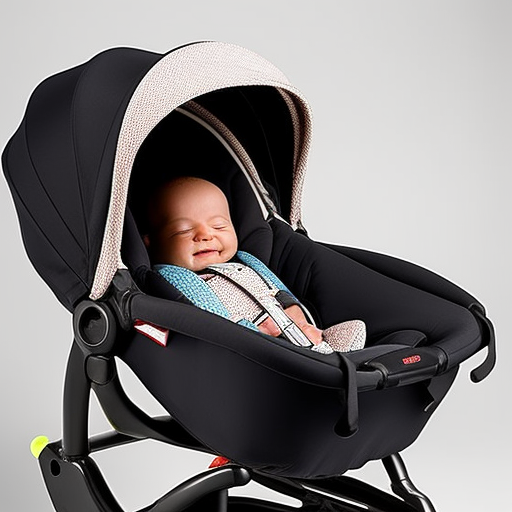
When choosing an infant car seat, it’s important to properly install it with the use of a base and ensure that the seat is securely fastened to protect your child in the event of a car accident.
To ensure a safe installation, start by reading the car seat manual thoroughly. Familiarize yourself with the installation instructions and any specific requirements for your car model.
Installation tips for infant car seats include using the seat belt or LATCH system to secure the base tightly to the vehicle seat. Make sure the base is level with the ground and that there’s no more than one inch of movement from side to side or front to back.
Additionally, choose the right size infant car seat for your child’s weight and height. It’s important to follow the manufacturer’s guidelines to ensure your child fits properly in the seat and is adequately protected. Keep in mind that infant car seats have weight limits, so you may need to transition to a different type of car seat as your child grows.
Convertible Car Seats
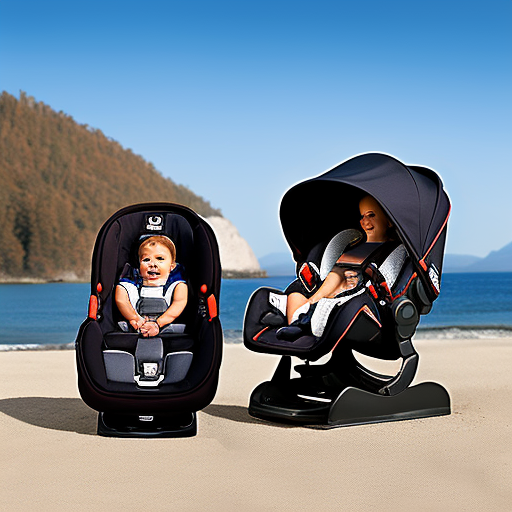
To choose a convertible car seat, consider the weight and height limits that will accommodate your growing child. A convertible car seat is designed to be used in both rear-facing and forward-facing positions, making it a versatile option that can be used for an extended period. When it comes to installation, convertible car seats typically use either the LATCH system or the vehicle’s seat belt. It’s important to carefully follow the manufacturer’s instructions to ensure a secure and proper installation.
One key factor to consider when selecting a convertible car seat is the weight limit. Convertible car seats come with different weight limits for both rear-facing and forward-facing positions. The rear-facing weight limit is typically higher, allowing your child to remain in the safer rear-facing position for a longer period. Once your child reaches the weight limit for rear-facing, you can then switch to the forward-facing position. It’s crucial to adhere to the weight limits specified by the manufacturer to ensure maximum safety.
In addition to weight limits, convertible car seats also have height limits. These limits ensure that your child is properly supported and protected as they grow. It’s important to regularly check your child’s height and weight to ensure they’re within the specified limits for the car seat.
All-in-One Car Seats
To continue considering car seat options, let’s now explore the benefits of all-in-one car seats.
All-in-one car seats are a popular choice among parents due to their versatility and convenience. These seats are designed to accommodate children from infancy to toddlerhood and even beyond, eliminating the need for multiple car seats as your child grows.
One of the key advantages of all-in-one car seats is their installation methods. Most models offer both rear-facing and forward-facing installation options, allowing you to choose the one that best suits your child’s age and weight. This flexibility ensures that your child remains safe and secure as they grow.
Another benefit of all-in-one car seats is their weight limits. These seats typically have higher weight limits compared to other types of car seats, allowing your child to use them for a longer period. This is particularly beneficial for parents who want to get the most out of their investment and avoid the hassle of buying multiple car seats as their child grows.
Booster Seats

Now let’s delve into the benefits of booster seats, which expand on the versatility of all-in-one car seats. Booster seats are an essential tool for ensuring the safety of your child while on the road. They are designed to provide additional height and support, allowing your child to use the vehicle’s seatbelt more effectively.
Booster seats come with a range of safety features that are specifically designed to protect your child in the event of an accident. These features often include side-impact protection, energy-absorbing foam, and adjustable headrests. Additionally, booster seats have age and weight requirements that must be followed to ensure proper usage. These requirements vary depending on the specific booster seat model, but generally, children between the ages of 4 and 12 and weighing between 40 and 120 pounds are the target users for booster seats.
To give you a better understanding, here is a table outlining some popular booster seats and their corresponding age and weight requirements:
| Booster Seat Model | Age Requirement | Weight Requirement (lbs) |
|---|---|---|
| Model A | 4 and above | 40 – 80 |
| Model B | 5 and above | 50 – 100 |
| Model C | 6 and above | 60 – 120 |
| Model D | 7 and above | 70 – 120 |
Rear-Facing Car Seats
If you have a young child, you should consider using a rear-facing car seat for optimal safety. Rear-facing car seats are designed to protect your child’s head, neck, and spine in the event of a crash.
Here are three reasons why rear-facing car seats are so important:
-
Enhanced Protection: Rear-facing car seats provide the best protection for infants and toddlers. The seat cradles their delicate bodies and distributes the force of a crash across the back of the seat, reducing the risk of injury to their neck and spine.
-
Developmental Benefits: Rear-facing car seats allow your child to sit in a more natural position, supporting their developing muscles and skeletal structure. This promotes proper alignment and can help prevent musculoskeletal issues in the long run.
-
Easy Installation: Installing a rear-facing car seat is simpler than ever. Many car seats come with clear instructions and user-friendly features, making the process hassle-free. It’s essential to follow the manufacturer’s guidelines and ensure a secure installation to maximize safety.
Remember, the longer you can keep your child in a rear-facing car seat, the better. It’s recommended to keep them rear-facing until they reach the height or weight limit specified by the car seat manufacturer.
Prioritizing rear-facing car seat safety is a crucial step in protecting your child on the road.
Forward-Facing Car Seats

When choosing a car seat for your child, consider the benefits of using a forward-facing car seat. These types of car seats are designed to accommodate children who have outgrown their rear-facing seats. Forward-facing car seats provide additional support and protection for your child as they continue to grow.
One important aspect to consider when installing a forward-facing car seat is ensuring that it is securely fastened. This can be done by using the vehicle’s seat belt or the lower anchors and tethers for children (LATCH) system. It is crucial to follow the manufacturer’s instructions for proper installation to ensure maximum safety for your child.
Another important factor to consider is the weight limit of the forward-facing car seat. Each car seat has a specified weight limit that should not be exceeded. It is essential to regularly check the weight of your child to ensure that they are within the limit for the car seat they are using. If your child exceeds the weight limit, it is time to transition them to a booster seat.
To help you choose the right forward-facing car seat for your child, here is a table outlining some popular models and their weight limits:
| Car Seat Model | Weight Limit |
|---|---|
| Model A | 25-65 lbs |
| Model B | 20-65 lbs |
| Model C | 22-65 lbs |
| Model D | 30-100 lbs |
Combination Car Seats
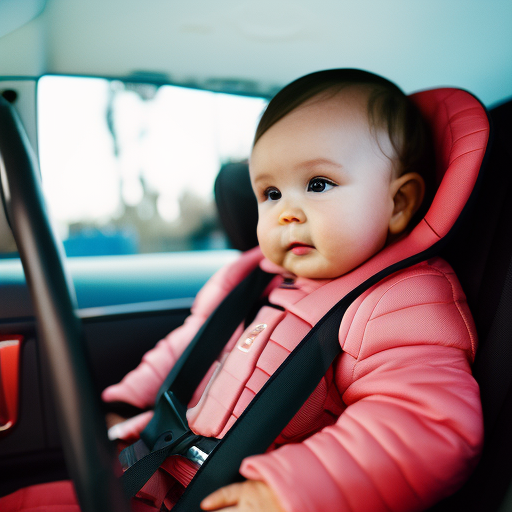
Consider the versatility of a combination car seat for your growing child. A combination car seat is designed to adapt to your child’s changing needs, providing both safety and comfort.
Here are three reasons why choosing the right combination car seat can benefit you and your little one:
-
Longevity: Combination car seats are designed to accommodate children from infancy to toddlerhood. With adjustable features such as harness height and recline positions, they can grow with your child, ensuring a secure fit and optimal comfort throughout the years.
-
Cost-effective: Investing in a combination car seat means you won’t have to purchase multiple car seats as your child grows. This not only saves you money but also eliminates the hassle of constantly switching seats and adjusting settings.
-
Convenience: Combination car seats are often equipped with easy installation systems, making it a breeze to transfer between vehicles. Additionally, some models can be converted into booster seats, providing extended use and added convenience as your child transitions to the next stage.
When choosing a combination car seat, consider factors such as safety ratings, weight and height limits, ease of use, and comfort features. It’s important to thoroughly research and compare different models to ensure you find the perfect fit for your child’s needs.
High-Back Booster Seats
You should consider using a high-back booster seat for your child’s safety and comfort. High-back booster seats are designed to provide additional support and protection for your child as they transition from a forward-facing car seat to using the vehicle’s seat belts alone. These seats offer a number of features that enhance safety and ensure a comfortable ride for your little one.
Here are some key features of high-back booster seats:
| Features | Benefits |
|---|---|
| Side-impact protection | Offers added protection in the event of a collision, reducing the risk of injury. |
| Adjustable headrest | Provides support for your child’s head and neck, ensuring proper alignment and comfort. |
| Shoulder belt guide | Guides the seat belt across your child’s shoulder, minimizing the risk of injury and ensuring proper positioning. |
| LATCH system | Allows for easy installation and secure attachment to the vehicle’s seat. |
| Padded armrests | Enhances comfort during long car rides and provides a place for your child to rest their arms. |
Using a high-back booster seat offers several benefits. It elevates your child, allowing the seat belt to fit properly across their shoulders and hips. This ensures that the seat belt sits at the correct height and angle, reducing the risk of injury in the event of a crash. Additionally, the side-impact protection and adjustable headrest provide added safety and comfort, giving you peace of mind while on the road.
Backless Booster Seats

If you’re looking for a compact and convenient option, a backless booster seat may be the right choice for your child’s safety and comfort. Here are some pros and cons of using backless booster seats, along with tips for choosing the right one for your child:
Pros of using backless booster seats:
- Portability: Backless booster seats are lightweight and easy to move from one car to another, making them perfect for families on the go.
- Affordability: Compared to high-back booster seats, backless boosters are generally more affordable, making them a cost-effective option.
- Independence: Backless booster seats allow older children to sit higher and use the regular seat belt, promoting a sense of independence.
Cons of using backless booster seats:
- Lack of head and neck support: Backless boosters don’t provide the same level of support as high-back boosters, which may be a concern for younger children or those who tend to fall asleep in the car.
- Limited side impact protection: Without the added side wings, backless boosters offer less protection in the event of a side collision.
- Height requirements: Children must meet the minimum height requirement to safely use a backless booster seat, which may delay the transition from a forward-facing car seat.
Tips for choosing the right backless booster seat for your child:
- Check the weight and height limits of the booster seat to ensure it’s suitable for your child.
- Look for booster seats with adjustable armrests and seat belt guides for proper positioning.
- Choose a booster seat that has been tested and certified to meet safety standards.
5-Point Harness Car Seats

When transitioning from a backless booster seat, opting for a Point Harness Car Seat ensures added safety and support for your child while traveling. These car seats are designed to keep your child securely in place, minimizing the risk of injury during a collision or sudden stop. The installation process of a Point Harness Car Seat is straightforward and typically involves attaching the seat to your vehicle using either the LATCH system or the vehicle’s seat belt. It’s important to carefully follow the manufacturer’s instructions to ensure proper installation.
One of the key features of Point Harness Car Seats is their adjustability. These seats often come with multiple harness height positions and adjustable shoulder straps, allowing you to customize the fit as your child grows. This ensures that the seat remains snug and secure at all times, providing optimal protection. Some models also offer adjustable recline positions, allowing your child to travel in a comfortable and safe position.
When selecting a Point Harness Car Seat, it’s crucial to consider your child’s weight and height to ensure the seat is appropriate for their size. Additionally, always choose a car seat that meets or exceeds safety standards and has been crash-tested. Remember to register your car seat with the manufacturer to receive important safety updates and recall notifications.
LATCH System Car Seats
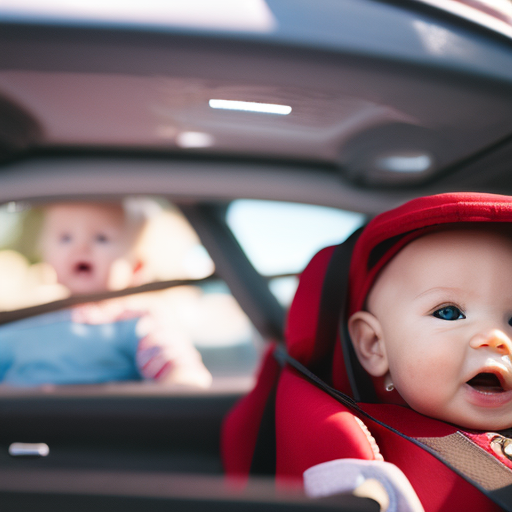
To properly secure your child’s car seat, attach it to your vehicle using the LATCH system. The LATCH (Lower Anchors and Tethers for Children) system provides an easy and secure way to install car seats.
Here are three important things you need to know about LATCH system car seats:
-
LATCH system installation: The LATCH system consists of lower anchors and top tethers that are built into your vehicle. To install a LATCH system car seat, simply attach the lower anchors to the designated anchor points in your vehicle. Then, tighten the straps to ensure a snug and secure fit. Finally, attach the top tether to the anchor point located behind the car seat. This installation method provides additional stability and reduces the risk of the car seat moving during a crash.
-
LATCH system weight limits: It’s crucial to know the weight limits for your LATCH system. Most LATCH systems have weight limits of around 65 pounds for the combined weight of the child and the car seat. Once the weight exceeds this limit, it’s recommended to switch to using the vehicle’s seat belt instead.
-
Proper installation is key: It’s essential to follow the manufacturer’s instructions and the vehicle’s user manual when installing a LATCH system car seat. Take the time to ensure that the car seat is securely installed and that all straps and buckles are properly adjusted. Regularly check the installation to make sure it remains tight and secure.
Car Seat Safety Guidelines
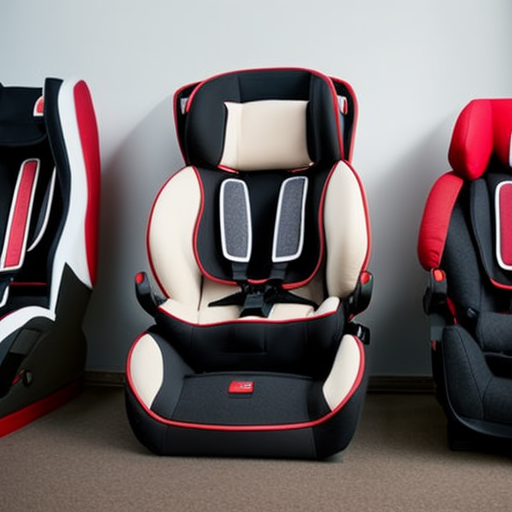
Securing your child’s car seat properly is essential for their safety, and following car seat safety guidelines is crucial. Here are some important tips to ensure that your child’s car seat is installed correctly.
First, make sure to read the car seat manufacturer’s instructions carefully and follow them closely. This will provide you with specific guidance on how to install the seat correctly in your particular vehicle.
When installing the car seat, it’s important to use either the vehicle’s seat belt or the LATCH system, which stands for Lower Anchors and Tethers for Children. The LATCH system provides an additional layer of security by attaching the car seat directly to the vehicle’s anchors. However, keep in mind that the LATCH system has weight limits, so be sure to check the car seat’s manual for these specifications.
Another crucial aspect of car seat safety is knowing when to replace the seat. Car seats have expiration dates, usually around six to ten years from the date of manufacture. This is because the materials used in car seats can degrade over time, compromising their effectiveness in protecting your child. It’s important to check the expiration date on your car seat and replace it accordingly.
Frequently Asked Questions
What Are the Weight and Height Limits for Each Type of Car Seat?
You’re wondering about the weight and height limits for each type of car seat. Well, the weight limits vary, but generally start around 5 pounds and go up to 120 pounds. As for height, it depends on the specific seat, but most have a maximum height limit of around 57 inches.
Can I Use a Car Seat Purchased in Another Country?
Can you use a car seat purchased in another country? It’s important to properly install a car seat, and safety regulations for car seats can vary between countries. Check the laws and guidelines to ensure compliance.
Are There Any Specific Installation Requirements for Car Seats?
To ensure the safety and proper installation of your car seat, it is important to follow car seat installation tips and car seat safety guidelines. These requirements vary depending on the type of car seat you have.
How Often Should I Replace a Car Seat?
You should replace your car seat when it reaches its expiration date or shows signs of wear and tear. It’s important to prioritize your child’s safety, so regularly check for any damage and follow the manufacturer’s guidelines for replacement.
Can I Use a Car Seat That Has Been Involved in a Minor Accident?
You should not use a car seat that has been involved in a minor accident. It is important to follow car seat safety guidelines and replace the seat after any major accidents to ensure your child’s safety.
Conclusion
So there you have it, a breakdown of the different types of car seats.
From infant seats that cradle your little one, to convertible seats that grow with them, and all-in-one seats that do it all.
Don’t forget the booster seats that elevate them to the next level, and the rear-facing seats that prioritize safety.
And let’s not overlook the backless boosters and 5-point harness seats that keep them secure.
Remember to always follow the LATCH system and the car seat safety guidelines.
Safety first, always.


